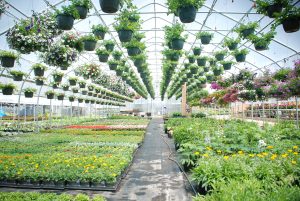Trees are a majestic and integral part of our natural environment, providing shade, beauty, and even improving air quality. As homeowners, we often appreciate the benefits that trees bring to our properties. However, it is crucial to remember that trees can also pose potential hazards if not properly cared for or maintained. From falling branches during storms to uprooted trunks causing damage to homes and property, tree disasters can result in significant harm and costly repairs. In order to safeguard ourselves and our homes from such incidents, it is essential for homeowners to be aware of proper tree safety measures. One of the key services offered by Tree Wurk is tree pruning and trimming. This involves carefully removing dead, diseased, or overgrown branches to improve the overall health and appearance of the tree. Pruning not only enhances the aesthetics but also promotes proper growth and prevents potential hazards such as falling branches during storms. This article aims to provide valuable insights and essential safety tips for homeowners on how to avoid tree disasters and ensure the well-being of both their properties and loved ones.
The importance of tree safety at home
One of the most crucial aspects of home safety that often gets overlooked is tree safety. Trees can provide numerous benefits to our homes and surroundings, but they can also pose serious risks if not properly maintained or cared for. It is essential for homeowners to prioritize tree safety to prevent accidents, property damage, and potential injuries.
Regular inspections and maintenance are key when it comes to ensuring tree safety at home. Homeowners should regularly inspect their trees for any signs of disease, decay, or structural weaknesses such as cracks or leaning. It is important to address these issues promptly by consulting with a certified arborist who can assess the situation and recommend appropriate measures such as pruning, cabling, or even removal if necessary.
Assessing tree health: Signs of potential danger
Assessing tree health is crucial for homeowners to prevent potential danger and ensure the safety of their property. There are several signs that indicate a tree may pose a risk, such as leaning or tilting trunks. A visibly leaning tree could be an indication of root damage, soil erosion, or structural instability, which increases the chances of it falling during storms or high winds.
Another sign to look out for is dead or decaying branches. Dead branches can easily break off and fall, posing a threat to people and property below. Additionally, the presence of fungus or mushrooms around the base of a tree can indicate internal decay. This decay weakens the structure of the tree and makes it more prone to failure.
Pruning and maintaining trees: Regular care for safety
One of the most important aspects of maintaining trees on your property is regular pruning. Pruning involves removing dead or damaged branches, improving the tree’s structure, and controlling its growth. By doing so, you not only enhance the aesthetic appeal of your landscape but also ensure the safety of yourself and others.
Regular pruning helps to prevent accidents by reducing the risk of falling branches. Dead or weakened branches are more likely to break off during storms or strong winds, posing a potential danger to people and property below. Additionally, when trees grow too close to power lines or buildings, they can cause structural damage or increase the risk of electrical hazards. Timely pruning helps maintain a safe distance between trees and structures.
Identifying hazardous tree species: Knowledge for prevention
Identifying hazardous tree species is crucial for homeowners to prevent potential disasters and ensure the safety of their property. Certain tree species are more prone to diseases, decay, or structural defects that make them vulnerable to falling during severe weather conditions. One common hazardous tree species is the silver maple (Acer saccharinum), which has weak wood and shallow roots that can easily break or uproot in high winds. Another dangerous tree is the Bradford pear (Pyrus calleryana), known for its fast growth and weak branch structure, making it susceptible to splitting under pressure.
Furthermore, distinguishing hazardous trees requires knowledge about specific characteristics and signs of decay or damage. For instance, dead branches or limbs hanging precariously from a tree indicate an increased risk of falling. Cracks in the trunk or large scaffold branches might suggest internal decay or weakness within the structure. Additionally, mushrooms growing at the base of a tree may indicate rotting roots, compromising its stability. By learning about these warning signs and understanding which species are particularly prone to hazards, homeowners can take proactive measures such as regular inspections and timely removals to minimize potential risks on their property.
Conclusion: Prioritizing tree safety for a secure home.
In conclusion, taking the necessary precautions and following safety guidelines is crucial for homeowners to avoid tree disasters. Regularly inspecting trees for signs of decay or damage, pruning them properly, and maintaining a safe distance from power lines are important steps in ensuring the safety of both property and individuals. Here,We have explored everything you need to know about Marietta tree removal – from understanding when it’s appropriate to remove a tree to finding reliable and professional arborists who can handle the job safely and efficiently.Additionally, seeking professional help for large or hazardous trees can prevent accidents and minimize risks. By being proactive and informed about tree care, homeowners can greatly reduce the likelihood of tree-related disasters. Remember, a little effort goes a long way in protecting your home and loved ones. Stay safe and take action today!
ALSO READ / tips for a low maintenance garden






Be First to Comment